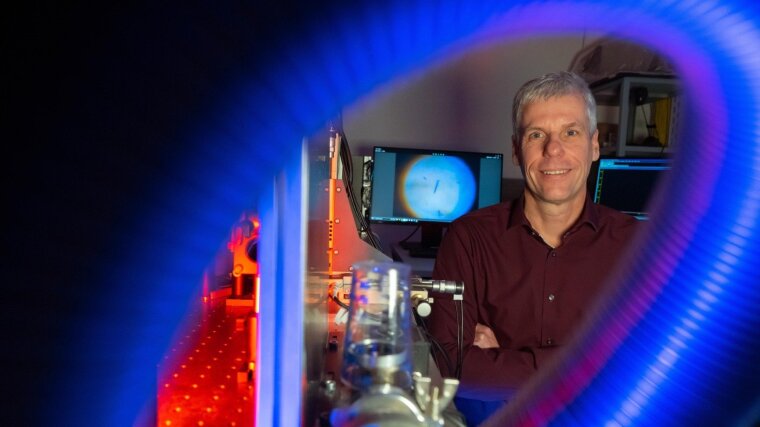
- Light
Published: | By: Axel Burchardt
Source article
A research project from the Universities of Jena and Karlsruhe (KIT) and the Ecole Polytechnique Fédérale de Lausanne (EPFL) will receive 14 million euros in funding, as the European Research Council (ERC) announced today (05.11.24). Thanks to this "ERC Synergy Grant", the interdisciplinary research team will be able to work on combining methods from electronics and photonics over the next six years. The researchers want to use new ideas and materials to significantly accelerate the transmission speed and rate of information and communication.
In order to hold online meetings or send files around the world, for example, electrical signals are now generated in the computer and travel to the partner. In order to work at high speeds, the "slow" electrical signals are converted into "light-fast" optical signals and amplified. "Currently, the interface between electronics and photonics – the electro-optical modulator – limits the speed of data transmission," explains Prof. Dr Carsten Ronning from the University of Jena. "This limit is currently the bottleneck that we want to overcome in the new project. In the future, for example, there will be even more data transmission with artificial intelligence – and this interface would otherwise probably slow down AI," says the solid-state physicist from Jena. To enable the necessary data transmission, the team wants to realise new ideas and materials. "To do this, electronics and photonics must become one," says Ronning.
Optimising and miniaturising the electro-optical component
The researchers have proven in principle that such an electro-optical translator and amplifier works on a tiny chip. Now this technology is to be expanded, optimised and, ideally, integrated into one common circuit.
In Jena, which is receiving around 2.7 million euros in funding, Prof. Carsten Ronning and his team will implant ions from light centres into passive optical components. They will test it with different light centres so that the entire wavelength range – from 800 to 1700 nm – is covered. This would allow the wavelength of the light to be adjusted and the active components could then be used to create amplifiers of light signals.
Secondly, new non-linear optical materials are to be incorporated into photonic integrated circuits (PICs). To do this, the material sample is irradiated with ions until it breaks at a specific depth. This new, monocrystalline layer is then applied to another material – as if a slice of cheese is placed on a loaf of bread, but on a tiny scale.
To achieve the goal of the ATHENS project (Active Hybrid Photonic Integrated Circuits for Ultra-Efficient Electro-Optic Conversion and Signal Processing), "a lot still needs to be optimised and investigated," says Carsten Ronning. "This can only be realised as a team, but we are in an excellent position to do so."
ERC Synergy Grants
ERC Synergy Grants promote collaboration between outstanding researchers and enable them to pool their expertise, knowledge and resources to push the boundaries of scientific discovery. This funding is part of the EU research and innovation programme "Horizon Europe".
In the current round of approvals, 57 projects were selected from 548 proposals across the EU.